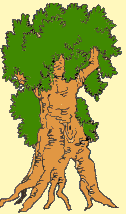Tinospora bakis
Tinospora bakis
Common name: bakis
African names ~ Wolof: bakis - Peuhl: abolo, bakani
use
This is the very example of the application of the theory of similars where a yellow root like that of Bakis or Nauclea latifolia makes it possible to treat jaundice in the broad sense, diagnosed by the coloring of the integuments and sclerotitis. All jaundice that results from hepatitis or consecutive to a malaria attack is treated by these plants. Bakis is often associated with the green fruit of Carica papaya (papaya).
Description
It is a small shrub with yellow roots and liana-like stems that can reach 10 meters in height and cling to trees. The alternate, heart-shaped leaves have a pointed top. They have a long petiole. The flowers are greenish-yellow and the fruits are small, ovoid drupes. The roots are harvested without destroying the tree.
Curative action
According to the work of some researchers, the root of Tinospora bakis contains a bitter principle, columbine, and various quaternary alkaloids, the main one of which is water-soluble palmatine. Colombine increases bile secretion and palmatine is febrifuge and cholagogue. The anti-icteric action of a decoction of the root has shown a hepato-protective and anti-hemolytic action.
Direction of use
Jaundice - Fever
In all cases of jaundice, drink half a liter of water every day in which a large root cut into slices has been macerated or drink a decoction of the same root.a
Add a comment






















